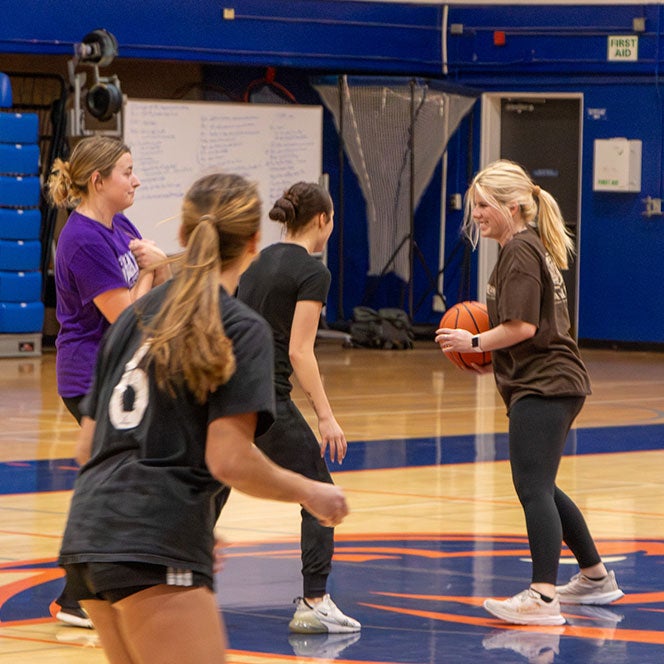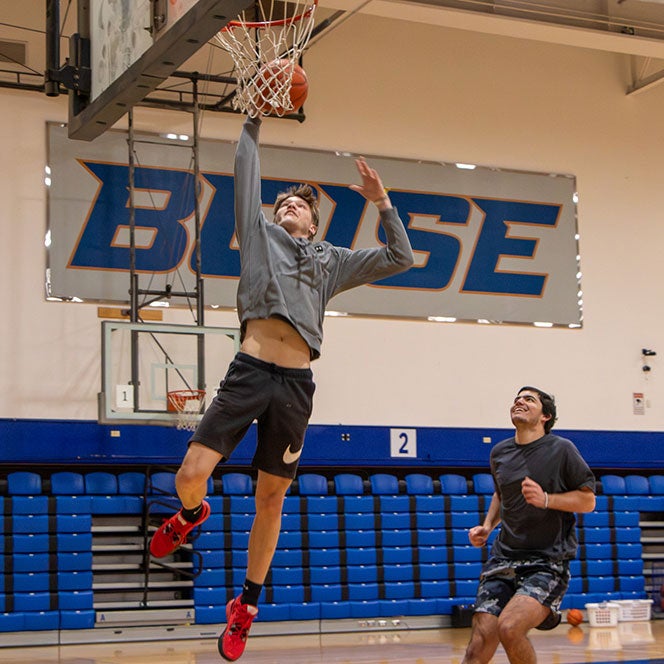
Housed in the College of Health Sciences’ Department of Kinesiology is an under-the-radar degree that can lead to jobs and futures that are the stuff of ad spreads and streamed content.
And while many COHS students graduating this spring will take a more expected path — kinesiology degree to physical therapy school to a position as a therapist — a handful of college graduates are headed elsewhere: into the elementary and secondary schools in Idaho and across the region and country. Or quite possibly to the YMCA. A wellness spa. A cruise ship.
Of the approximately 700 students in the department, less than 8 percent, about 55, are working toward bachelor’s degrees in the K-12 Physical Education and Health program. While many of the class requirements are the same, the K-12 PE degree leads to a teacher’s certification, with which a graduate can teach physical education and health.
It’s an alternate route that Tyler Johnson, a professor in the department who co-coordinates the program with Jane Shimon, thinks more students might consider.

Johnson lists the benefits: The K-12 Physical Education & Health students learn curriculum design, a useful skill across numerous professions, not just teaching. Graduates of the program could choose later to pursue therapy training but are not locked in as undergraduates. The list of potential careers is lengthy; it’s not just strictly a “teaching” path. And there’s the obvious as well: Not all students, given the numbers pursuing the training and field, will be accepted into the therapy programs.
Johnson would know. He, Shimon and a colleague in the department, Kim Tucker, all have experience in the field, with a combination of teaching and administrative experience among them.
If making a difference in the lives of young people is a student’s goal, the program hits the mark, Johnson observes. Given the nature of coaching, sports and health and fitness programs in the schools, the adults leading these programs are often in a unique position to impact younger people.
“Young people need mentors these days, now more than ever, and a guide, teaching them life skills and content,” he said. “It’s a chance to mentor, to influence kids, to impact them, to share skills that will follow them into their futures.
“Those things, they’re not going to get anywhere else, and we have a really important job to fulfill to equip them to be physically literate,” Johnson said. “These are important topics for youths and provide an opportunity for face-to-face interactions.”

Johnson understands that entering public education can be daunting, perhaps particularly so for college grads carrying debt or concerned about future salaries. The degree, however, is a deceptively broad path; graduates can, and have, gone on to start businesses, become firefighters, work in administration in parks departments and find positions as conditioning coaches and with a variety of youth teams and sports programs, among other areas.
Many graduates stay local, finding positions in the Boise, West Ada, Vallivue, Nampa and Kuna school districts and tapping into the solid teaching and curriculum-building skills they learned at Boise State.

Their university classes in, say, volleyball and pickleball, weren’t just an afternoon on the court. They were letter-grade level education in how to teach and how to design a program that can be taught.
“It’s not just come and show up,” Johnson said. “You’ve got to demonstrate that you can teach this content, demonstrate your knowledge of the subject matter and write lesson plans for that content. There’s rigor to the classes. People are held accountable.”